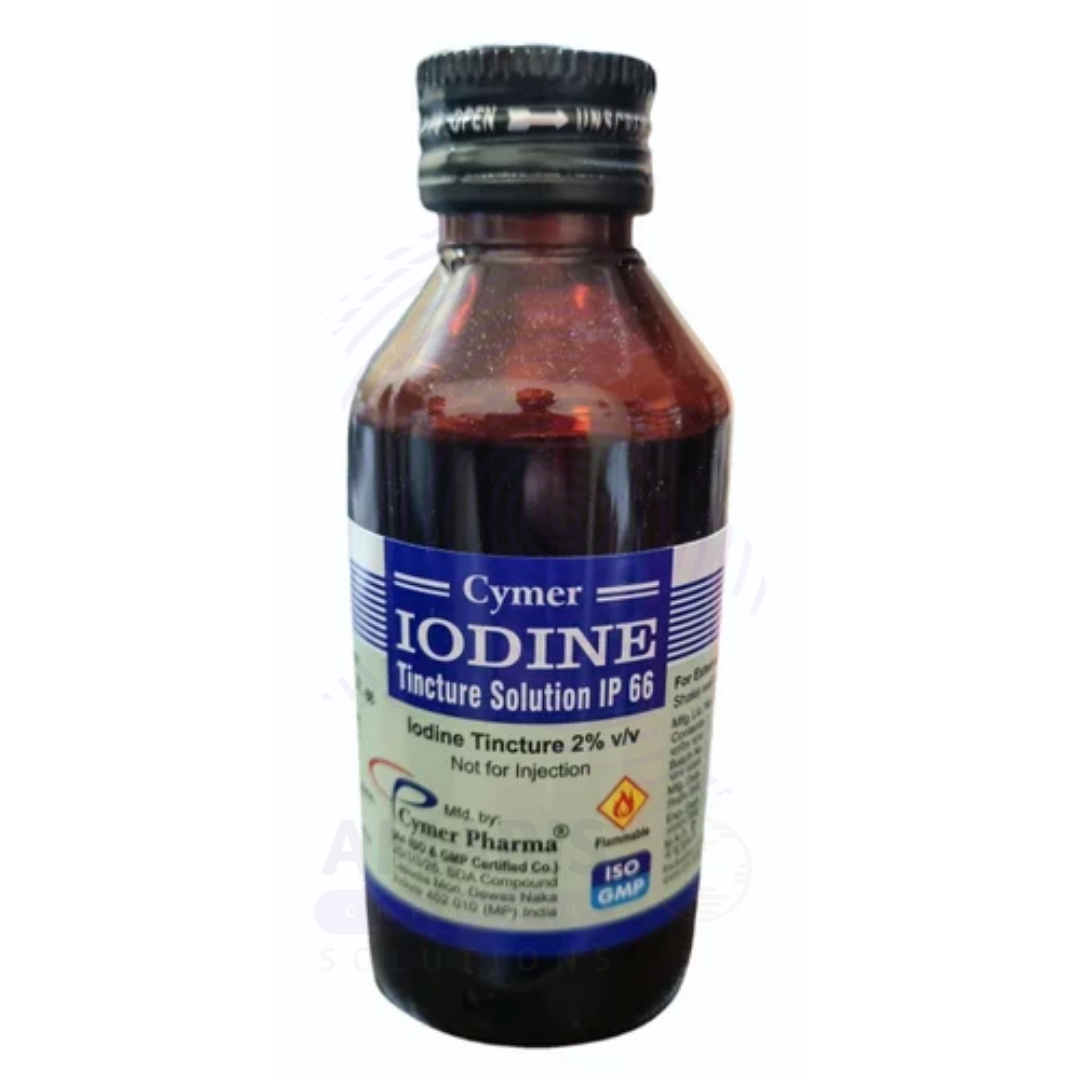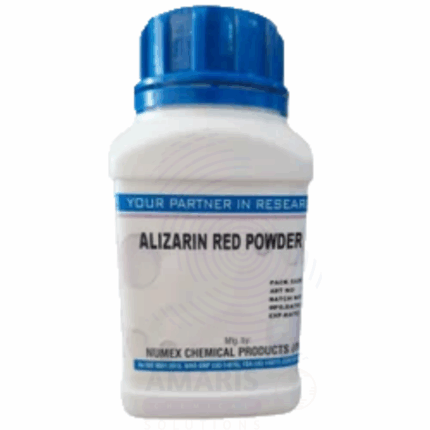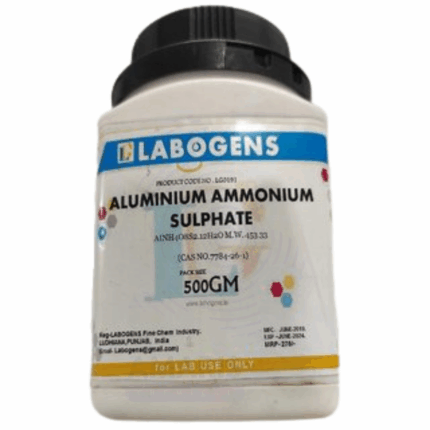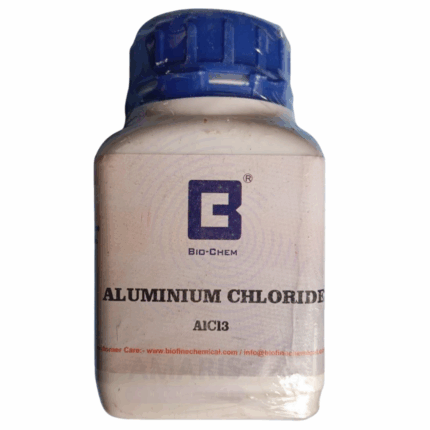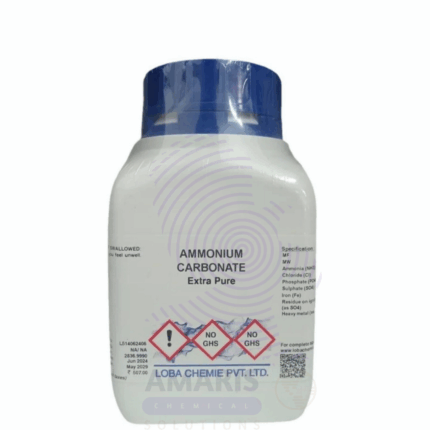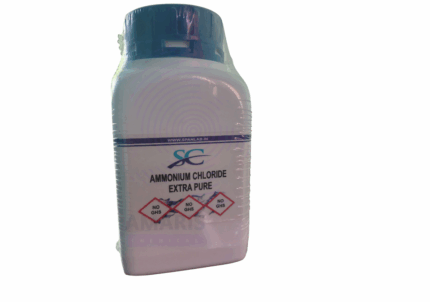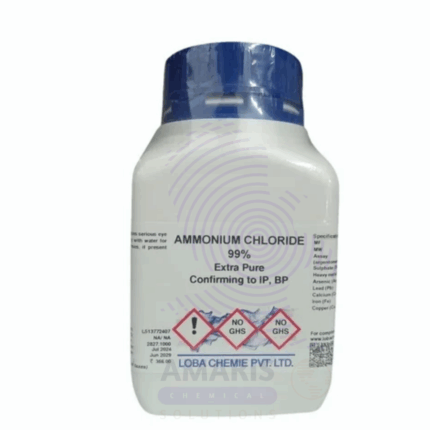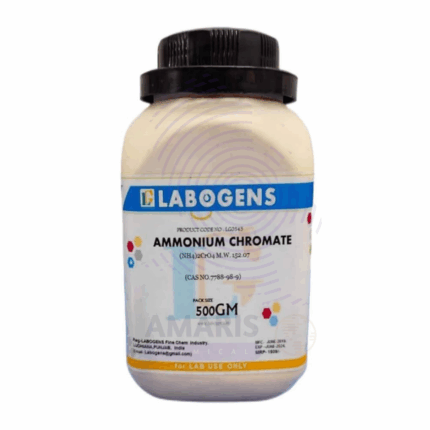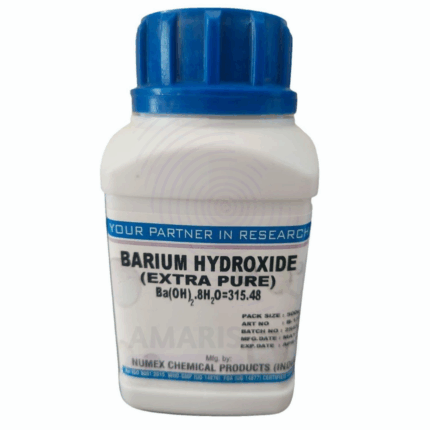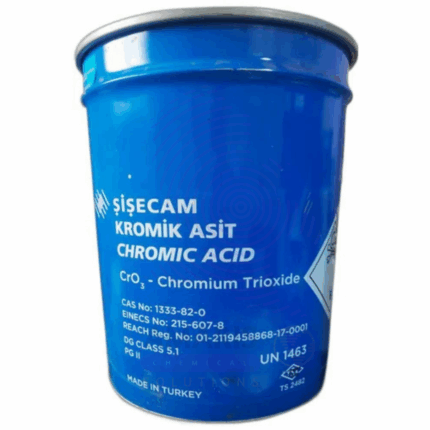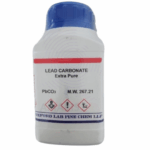
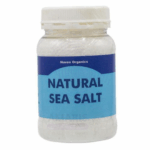
Iodine Tincture Extra Pure
$ 18.62 Original price was: $ 18.62.$ 18.54Current price is: $ 18.54.
Iodine Tincture Extra Pure is a high-quality antiseptic solution composed of elemental iodine dissolved in a mixture of alcohol and potassium iodide. It is widely used for disinfecting wounds, sterilizing skin before medical procedures, and as a laboratory reagent in various analytical and microbiological applications. Its fast-acting antimicrobial properties make it effective against bacteria, viruses, and fungi. In laboratory settings, it serves as a reliable indicator and staining agent. Due to its volatility and staining nature, the tincture should be handled with care and stored in tightly closed, amber-colored bottles to preserve stability and prevent degradation.
Iodine Tincture Extra Pure
Primary Uses
- Antiseptic and Disinfectant Studies:
Iodine tincture is commonly used in microbiology labs to study antimicrobial efficacy, particularly in surface sterilization and wound disinfection models. - Biological Staining:
Used as a mordant or contrast agent in microscopic studies, especially for enhancing visibility of cell structures in plant and animal tissues. - Chemical Testing for Starch:
Serves as a quick field reagent for starch detection, where the presence of starch turns the iodine solution deep blue-black.
Secondary Uses
- Iodine Source in Redox Titrations (Iodometry):
May serve as a readily available iodine source in some titration procedures when high-purity iodine is not required. - Educational Demonstrations and Experiments:
Used in science education to demonstrate concepts such as diffusion through membranes, osmosis, or antiseptic action in practical biology and chemistry. - Preparation of Dilute Iodine Solutions:
Acts as a stock solution for preparing various iodine-based reagents used in both analytical chemistry and biochemistry.
| PACK SIZE |
100ml |
|---|
1. Basic Identification Attributes
- Product Name: Iodine Tincture
- Grade: Extra Pure (Laboratory/Analytical Grade)
- Typical Composition:
- Iodine (I₂): 1–2%
- Potassium iodide (KI): ~2%
- Ethanol: ~47%
- Purified water: balance
- Appearance: Reddish-brown liquid
- Odor: Strong, characteristic iodine-alcohol odor
2. Physical & Chemical Properties
- Solubility: Miscible with water and alcohol
- Boiling Point: Depends on ethanol content (~78 °C)
- pH: Slightly acidic
- Vapor Pressure: Moderate due to ethanol
- Volatility: High (flammable due to alcohol content)
3. Safety & Hazard Attributes
- GHS Classification:
⚠️ Flammable Liquid (Category 2)
⚠️ Acute Toxicity – Oral/Inhalation (Category 4)
⚠️ Skin Irritation (Category 2)
⚠️ Eye Irritation (Category 2A)
⚠️ Aquatic Hazard (Category 1) - Hazard Statements:
- H225: Highly flammable liquid and vapor
- H315: Causes skin irritation
- H319: Causes serious eye irritation
- H302 + H332: Harmful if swallowed or inhaled
- H410: Very toxic to aquatic life with long-lasting effects
- PPE Requirements:
- Nitrile gloves
- Safety goggles
- Lab coat
- Use in fume hood or well-ventilated space
- First Aid Measures:
- Inhalation: Move to fresh air, seek medical help
- Skin: Wash with soap and water, remove contaminated clothing
- Eyes: Rinse with water for 15 minutes, seek attention
- Ingestion: Rinse mouth, do not induce vomiting, seek urgent medical care
4. Storage & Handling Attributes
- Storage Conditions:
- Keep tightly closed in amber or opaque bottles
- Store in cool, dry, well-ventilated area away from flames and heat sources
- Avoid exposure to light and oxidizers
- Container Type: Glass or compatible plastic with vapor-tight seal
- Incompatible Materials: Strong oxidizers, acids, alkalis, reducing agents
5. Regulatory & Transport
- UN Number: 1219 (Isopropanol-based tincture) or 1170 (Ethanol-based)
- Hazard Class: 3 (Flammable Liquid)
- Packing Group: II
- Labeling: Flammable, Irritant, Environmental Hazard
6. Laboratory Applications
- Primary Uses:
- Laboratory antiseptic and disinfectant demonstration
- Source of iodine and iodide in experiments
- Reagent in starch/iodine tests
- Topical antiseptic in biological experiments
- Secondary Uses:
- Preparation of iodine test kits
- Iodometry and redox studies
- Microbiology and histology procedures
- Classroom experiments for volatility, evaporation, and reaction with starch
SAFETY PRECAUTIONS
Personal Protective Equipment (PPE):
- Wear a lab coat, nitrile gloves, and safety goggles.
- Use in a well-ventilated area or under a fume hood due to volatile solvents.
Handling:
- Avoid skin and eye contact; iodine and alcohol can be irritating.
- Prevent inhalation of vapors.
- Wash hands thoroughly after use.
- Keep away from heat, sparks, open flames, and hot surfaces—no smoking.
Storage:
- Store tightly sealed in a cool, dry, and well-ventilated space.
- Keep away from light, heat, and incompatible substances (e.g. strong oxidizers).
- Flammable—store away from ignition sources.
FIRST AID MEASURES
Inhalation:
- Move the person to fresh air.
- Keep breathing comfortable for breathing.
- Seek medical attention if respiratory irritation occurs.
Skin Contact:
- Immediately wash with soap and water.
- Remove contaminated clothing.
- Seek medical advice if irritation develops or persists.
Eye Contact:
- Rinse carefully with water for several minutes.
- Remove contact lenses if present and easy to do.
- Continue rinsing and seek medical help.
Ingestion:
- Rinse mouth. Do not induce vomiting.
- Never give anything by mouth to an unconscious person.
- Seek immediate medical attention.
FIRE FIGHTING MEASURES
Flammability:
- Highly flammable due to alcohol content.
Extinguishing Media:
- Use CO₂, dry chemical powder, or alcohol-resistant foam.
- Water spray can cool surfaces but may spread flammable liquids.
Hazardous Combustion Products:
- Iodine vapors, carbon monoxide, carbon dioxide, and irritating fumes.
Firefighter Protection:
- Wear full protective clothing and self-contained breathing apparatus (SCBA).
- Evacuate the area and fight fire from a safe distance.
Related products
Alizarin Extra Pure
Aluminium Ammonium Sulphate Extra Pure
Aluminium Chloride Anhydrous Extra Pure
Ammonium Carbonate Extra Pure
Ammonium Carbonate Extra Pure is a high-quality, white crystalline solid widely used across various scientific, industrial, and food-related applications. Manufactured to stringent purity standards, this compound is ideal for laboratories and processes that demand high-grade reagents. With its characteristic ammonia-like odor and ability to decompose upon heating, ammonium carbonate plays a versatile role in both chemical reactions and physical processes.
In aqueous solution, ammonium carbonate breaks down into ammonium bicarbonate and ammonium carbamate, further releasing ammonia (NH₃) and carbon dioxide (CO₂) upon heating. This property makes it especially useful in applications that require controlled gas release or temporary pH modification.


 Preservatives(food)
Preservatives(food) Flavor Enhancers
Flavor Enhancers Acidulants
Acidulants Sweeteners
Sweeteners Antioxidants
Antioxidants Colorants(food)
Colorants(food) Nutraceutical Ingredients (food)
Nutraceutical Ingredients (food) Nutrient Supplements
Nutrient Supplements Emulsifiers
Emulsifiers
 Collectors
Collectors Dust Suppressants
Dust Suppressants Explosives and Blasting Agents
Explosives and Blasting Agents Flocculants and Coagulants
Flocculants and Coagulants Frothers
Frothers Leaching Agents
Leaching Agents pH Modifiers
pH Modifiers Precious Metal Extraction Agents
Precious Metal Extraction Agents
 Antioxidants(plastic)
Antioxidants(plastic) Colorants (Pigments, Dyes)
Colorants (Pigments, Dyes) Fillers and Reinforcements
Fillers and Reinforcements Flame Retardants
Flame Retardants Monomers
Monomers Plasticizers
Plasticizers Polymerization Initiators
Polymerization Initiators Stabilizers (UV, Heat)
Stabilizers (UV, Heat)
 Antifoaming Agents
Antifoaming Agents Chelating Agents
Chelating Agents Coagulants and Flocculants
Coagulants and Flocculants Corrosion Inhibitors
Corrosion Inhibitors Disinfectants and Biocides
Disinfectants and Biocides Oxidizing Agents
Oxidizing Agents pH Adjusters
pH Adjusters Scale Inhibitors( water)
Scale Inhibitors( water)
 Antioxidants(cosmetic)
Antioxidants(cosmetic) Emollients
Emollients Fragrances and Essential Oils
Fragrances and Essential Oils Humectants
Humectants Preservatives
Preservatives Surfactants(cosmetic)
Surfactants(cosmetic) Thickeners
Thickeners UV Filters
UV Filters
 Fertilizers
Fertilizers Soil Conditioners
Soil Conditioners Plant Growth Regulators
Plant Growth Regulators Animal Feed Additives
Animal Feed Additives Biostimulants
Biostimulants Pesticides (Herbicides, Insecticides, Fungicides)
Pesticides (Herbicides, Insecticides, Fungicides)
 Active Pharmaceutical Ingredients (APIs)
Active Pharmaceutical Ingredients (APIs) Excipients
Excipients Solvents(pharmaceutical)
Solvents(pharmaceutical) Antibiotics
Antibiotics Antiseptics and Disinfectants
Antiseptics and Disinfectants Vaccine Adjuvants
Vaccine Adjuvants Nutraceutical Ingredients (pharmaceutical)
Nutraceutical Ingredients (pharmaceutical) Analgesics & Antipyretics
Analgesics & Antipyretics
 Analytical Reagents
Analytical Reagents Solvents(lab)
Solvents(lab) Chromatography Chemicals
Chromatography Chemicals Spectroscopy Reagents
Spectroscopy Reagents microbiology-and-cell-culture-reagents
microbiology-and-cell-culture-reagents Molecular Biology Reagents
Molecular Biology Reagents Biochemical Reagents
Biochemical Reagents Inorganic and Organic Standards
Inorganic and Organic Standards Laboratory Safety Chemicals
Laboratory Safety Chemicals Specialty Laboratory Chemicals(Special Laboratory Equipment)
Specialty Laboratory Chemicals(Special Laboratory Equipment)
 Demulsifiers
Demulsifiers Hydraulic Fracturing Fluids
Hydraulic Fracturing Fluids Scale Inhibitors(oil)
Scale Inhibitors(oil) Surfactants(oil)
Surfactants(oil) Drilling Fluids
Drilling Fluids
 Dyes and Pigments
Dyes and Pigments Bleaching Agents
Bleaching Agents Softening Agents
Softening Agents Finishing Agents
Finishing Agents Antistatic Agents
Antistatic Agents
 Admixtures
Admixtures Waterproofing Agents
Waterproofing Agents Sealants and Adhesives
Sealants and Adhesives Curing Compounds
Curing Compounds Concrete Repair Chemicals
Concrete Repair Chemicals Anti-Corrosion Coatings
Anti-Corrosion Coatings
 Surfactants(cleaning)
Surfactants(cleaning) Builders
Builders Enzymes
Enzymes Solvents (Cleaning)
Solvents (Cleaning) Fragrances
Fragrances
 Electronic Chemicals
Electronic Chemicals Catalysts
Catalysts Lubricants
Lubricants Photographic Chemicals
Photographic Chemicals Refrigerants
Refrigerants Automotive chemicals
Automotive chemicals Pyrotechnic Chemicals
Pyrotechnic Chemicals
 Biodegradable Surfactants
Biodegradable Surfactants Bio-based Solvents
Bio-based Solvents Renewable Polymers
Renewable Polymers Carbon Capture Chemicals
Carbon Capture Chemicals Wastewater Treatment Chemicals
Wastewater Treatment Chemicals
 Pigments
Pigments Solvents(paint)
Solvents(paint) Specialty Coatings
Specialty Coatings Binders/Resins
Binders/Resins Additives
Additives Driers
Driers Anti-Corrosion Agents
Anti-Corrosion Agents Functional Coatings
Functional Coatings Application-Specific Coatings
Application-Specific Coatings
 Fresh Herbs
Fresh Herbs Ground Spices
Ground Spices Whole Spices
Whole Spices Spice Blends
Spice Blends Dried Herbs
Dried Herbs
 Leavening Agents
Leavening Agents Dough Conditioners
Dough Conditioners Flour Treatments
Flour Treatments Fat Replacers
Fat Replacers Decoratives
Decoratives Preservatives(baking)
Preservatives(baking)
 Plasticizers & Softeners
Plasticizers & Softeners Reinforcing Agents
Reinforcing Agents Adhesion Promoters
Adhesion Promoters Vulcanizing Agents
Vulcanizing Agents Antidegradants
Antidegradants Blowing Agents
Blowing Agents Fillers & Extenders
Fillers & Extenders Accelerators & Retarders
Accelerators & Retarders